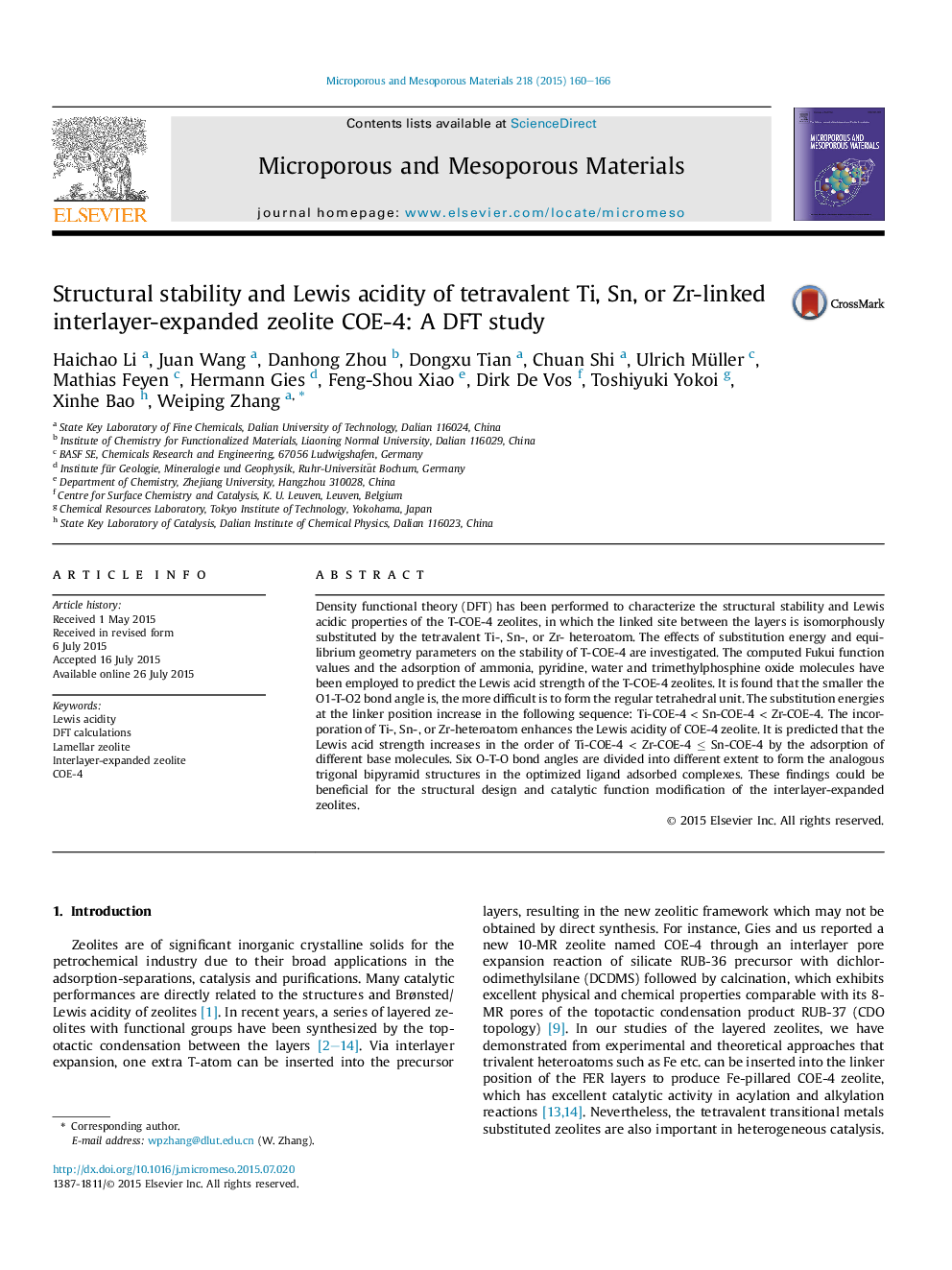| Article ID | Journal | Published Year | Pages | File Type |
|---|---|---|---|---|
| 72440 | Microporous and Mesoporous Materials | 2015 | 7 Pages |
•Tetrahedral Si of the linker-site in COE-4 is replaced by Ti, Sn, or Zr atom.•Framework stability and Lewis acidity of T-COE-4 are investigated by DFT.•Framework stability decreases in the order of Ti-COE-4 > Sn-COE-4 > Zr-COE-4.•Lewis acid strength increases with the sequence of Ti-COE-4 < Zr-COE-4 ≤ Sn-COE-4.
Density functional theory (DFT) has been performed to characterize the structural stability and Lewis acidic properties of the T-COE-4 zeolites, in which the linked site between the layers is isomorphously substituted by the tetravalent Ti-, Sn-, or Zr- heteroatom. The effects of substitution energy and equilibrium geometry parameters on the stability of T-COE-4 are investigated. The computed Fukui function values and the adsorption of ammonia, pyridine, water and trimethylphosphine oxide molecules have been employed to predict the Lewis acid strength of the T-COE-4 zeolites. It is found that the smaller the O1-T-O2 bond angle is, the more difficult is to form the regular tetrahedral unit. The substitution energies at the linker position increase in the following sequence: Ti-COE-4 < Sn-COE-4 < Zr-COE-4. The incorporation of Ti-, Sn-, or Zr-heteroatom enhances the Lewis acidity of COE-4 zeolite. It is predicted that the Lewis acid strength increases in the order of Ti-COE-4 < Zr-COE-4 ≤ Sn-COE-4 by the adsorption of different base molecules. Six O-T-O bond angles are divided into different extent to form the analogous trigonal bipyramid structures in the optimized ligand adsorbed complexes. These findings could be beneficial for the structural design and catalytic function modification of the interlayer-expanded zeolites.
Graphical abstractFigure optionsDownload full-size imageDownload as PowerPoint slide
